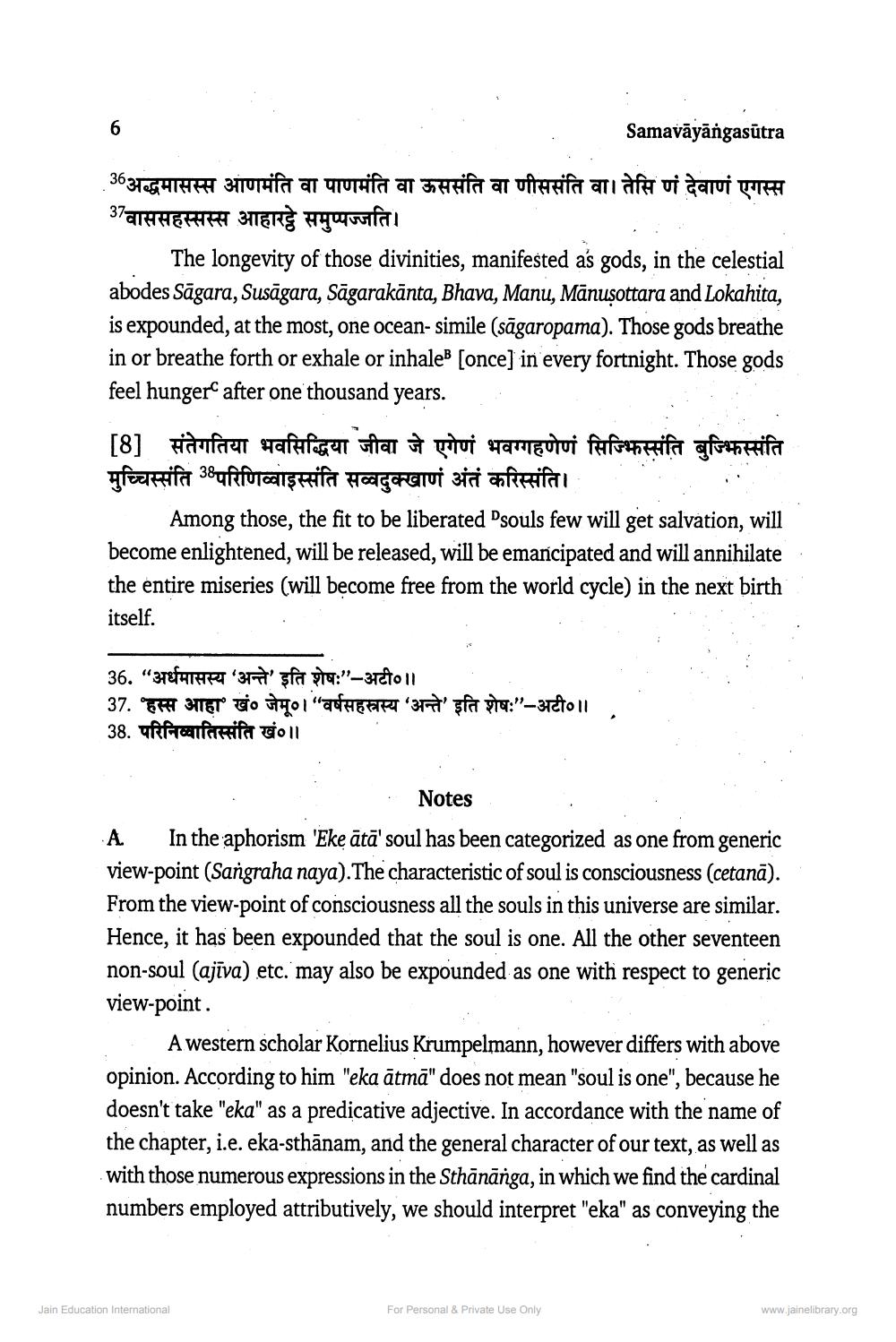________________
Samavāyāngasūtra
36अद्धमासस्स आणमंति वा पाणमंति वा ऊससंति वा णीससंति वा। तेसि णं देवाणं एगस्स 37वाससहस्सस्स आहारट्टे समुप्पज्जति।
The longevity of those divinities, manifested as gods, in the celestial abodes Sāgara, Susāgara, Sāgarakānta, Bhava, Manu, Mānusottara and Lokahita, is expounded, at the most, one ocean-simile (sāgaropama). Those gods breathe in or breathe forth or exhale or inhaleB [once) in every fortnight. Those gods feel hunger after one thousand years. [8] संतेगतिया भवसिद्धिया जीवा जे एगेणं भवग्गहणेणं सिन्झिस्संति बुझिस्संति मुच्चिस्संति परिणिव्वाइस्संति सव्वदुक्खाणं अंतं करिस्संति।
Among those, the fit to be liberated Psouls few will get salvation, will become enlightened, will be released, will be emancipated and will annihilate the entire miseries (will become free from the world cycle) in the next birth itself.
36. "37efur 'n sfat :"-37cto 11 37. FR HTET MOTTO authE tapet '31' sta sta:"-3710 11 38. uffroafareifa toll
Notes A In the aphorism 'Eke ātā' soul has been categorized as one from generic view-point (Sangraha naya).The characteristic of soul is consciousness (cetanā). From the view-point of consciousness all the souls in this universe are similar. Hence, it has been expounded that the soul is one. All the other seventeen non-soul (ajīva) etc. may also be expounded as one with respect to generic view-point.
A western scholar Kornelius Krumpelmann, however differs with above opinion. According to him "eka ātmā" does not mean "soul is one", because he doesn't take "eka" as a predicative adjective. In accordance with the name of the chapter, i.e. eka-sthānam, and the general character of our text, as well as with those numerous expressions in the Sthānānga, in which we find the cardinal numbers employed attributively, we should interpret "eka" as conveying the
Jain Education International
For Personal & Private Use Only
www.jainelibrary.org




